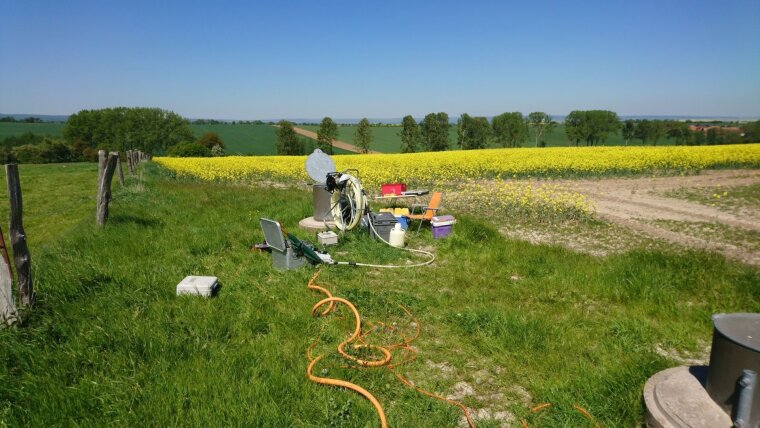
- Life
- Research
Published: | By: Sebastian Hollstein
The “Critical Zone”, as it is called, is the porous skin of the Earth, where air, water, rock and organisms interact. It extends from the vegetation, through the soil and rock, down to the groundwater that is sometimes several hundreds of metres deep, and these layers are connected by liquid flows and the transport of materials. Human beings depend on the resources from this zone – from their water supply to food production. Environmental pollution, land use and climate change are increasingly altering above-ground habitats, but what impact this has on underground habitats often remains hidden.
For this reason, since 2013, Jena researchers have been studying within the Collaborative Research Centre (CRC) AquaDiva how water connects habitats above and below ground und how local geological circumstances and surface conditions determine the characteristics and functional diversity of the underground habitats. The German Research Foundation has now decided to fund the consortium for a further four years, providing more than 11 million euros. Alongside nine institutes of the University of Jena, the project also involves the Helmholtz Centre for Environmental Research (UFZ), the Leibniz Institute of Photonic Technology e. V. (Leibniz-IPHT) and the Max Planck Institute for Biogeochemistry.
Microorganisms underground fix large amounts of carbon dioxide in same way as algae
Extreme weather conditions, such as summer droughts and heavy rainfall, which we have increasingly observed in recent years, have a major impact on the material exchanges from the surface to the subsurface and thus on groundwater recharge,” says Prof. Kirsten Küsel, who heads the CRC together with Prof. Susan Trumbore and Prof. Kai Uwe Totsche.
More intensive land use, such as the application of fertilisers, can also cause lasting damage to the quality of groundwater. To predict groundwater quantity and quality, it is necessary to better understand both the biogeochemical processes during transport through the subsurface and the microorganisms involved in conversion processes. The experts in Jena have identified biotic and chemical “fingerprints” that represent certain surface properties or “surface signals” and show how quickly they are transported and how they are transformed on their way to the groundwater.
In the third funding period starting in July 2021, the researchers want to carry out a comprehensive analysis of developments over time using the large amount of data collected during the previous years of the project.
“With the help of a large number of reactive tracers, as they are called, we are learning to better explain and assess the diverse flow paths and complicated transport processes in the subsurface,” explains Prof. Totsche. This deep underground biosphere is home to some 60 per cent of all microorganisms on Earth, which provide important services to humans.
“A successful collaboration between microbiology working groups of the University of Jena and our Institute for Biogeochemistry has been able to show that bacteria in the subsurface absorb large amounts of carbon dioxide and convert it into biomass,” says Prof. Trumbore.
These autotrophic bacteria also include anammox bacteria, which are mainly responsible for the elimination of nitrogen (nitrate) in groundwater. One of the Jena scientists’ goals is now to isolate novel anammox bacteria from groundwater that could be used in wastewater treatment.
New research platform enables predictions
The base for many measurements by the CRC is the research platform “Hainich Critical Zone Exploratory” near Hainich National Park in the state of Thuringia. This research area covering 25 square kilometres is equipped with a multitude of innovative measuring devices, which enable researchers to take water, gas and material samples from underground compartments, the soils and the groundwater. In order to generalise the concepts drawn up so far, the researchers have already set up a second research platform, the “Saale-Elster Sandstone Plate Observatory”, which has similar land use but different geology. Comparing data from the two platforms will help researchers to develop predictions about the reaction of the underground habitats – and especially the groundwater – to climate change scenarios, and the consequences for water resources.
More information about SFB AquaDiva